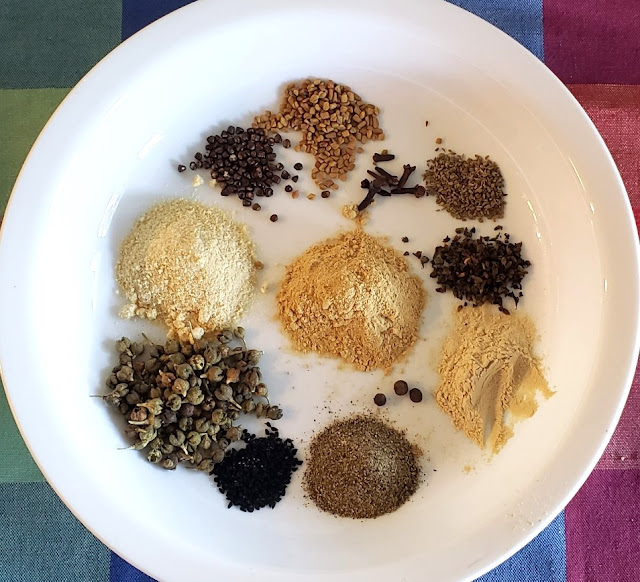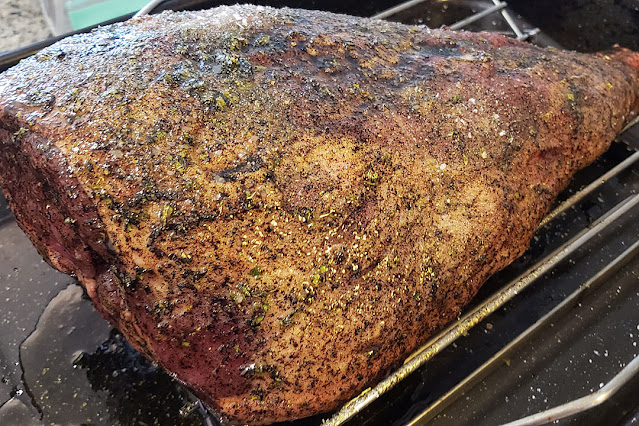FOR THE FERMENTING
Needed:
1 large STERILIZED mason jar +
lid/elastic + piece of clean fabric big enough to go cover the top.
400 grams of fresh chiles (any combo
you like depending on the heat level you’re looking for). I usually make it
with mostly medium heat chiles with a couple of super hots (habanero, fatalii,
reaper) thrown in for good measure. You can also use a combo that includes some
sweet peppers (say you’ve got only tiny aji charipita or only super hots – the sweet
peppers bulk it out and add colour)
Garlic/Carrot/Berries/Other fruits etc. if you want
1 Litre of filtered/uncholorinated
water at room temperature
30g/3 tbsp of fine sea salt
How to:
Combine water and salt, making
sure it all dissolves.
Stem and deseed the chiles.
You can keep some seeds if you want a bit more heat. USE GLOVES and maybe even
a mask and goggles to do this.
Put chiles and garlic (and
other ingredients if you’re using them) into a food processor and waz them up
to a coarse puree.
Transfer the mash to a 1
litre mason jar making sure to leave an about 5 cm at the top. Tap the jar
lightly to remove any air pockets.
Fill with brine and make sure
the mash is covered. It tends to float to the top, so either use a fermenting
weight in the top or take a small Ziploc bag and fill it with water (getting
all the air out) and stuff it in the top of the jar so it pushes the mash down.
Cover with the piece of cloth
using either the lid rid or an elastic band. If you have an airlock lid or
other fermenting lid, then use that but you don’t really need one. The cloth
lets it breathe. You can also just use a regular lid and burp it every day so
the gas can escape.
Put a label on the jar that
lets you know which chiles are in it as well as the date it was started.
Store the jar somewhere cool
and dark. I usually put it in the basement laundry. Fermenting will take about
two weeks but check up on it every day. The brine will start to go very cloudy I
usually make a second batch of brine and fill up the jar if the chiles aren’t
totally covered. You’ll definitely be smelling it.
(Measure for pH with
a good pH meter to ensure the brine is below 4.6. This is the pH
at which botulinum toxin can no longer form and is a good minimum
acidity to target. Lots more details about fermenting, pH levels etc here.)
Note on kahm yeast (or
that white stuff that you might see floating on the top of your ferment): It’s
not harmful to eat but best to remove it when you see it. Scrape any visible yeast off of the top of your
ferment with a clean utensil as soon as you see it form. Once it forms it
usually continues to grow. Watch your contaminated ferment very closely and
continue to clean away yeast everyday if needed. You many need to add more
fresh brine to make sure your chiles are covered.
You can ferment for longer
than two weeks to give it more of that funky/sour fermented flavour. You can
leave it as long as you like as long as it doesn’t spoil or get moldy. I
usually do about three weeks and then make sauce or pop them in the fridge for
a few months.
MAKING THE SAUCE
Needed:
Bottles for putting the sauce
in.
· Woozy/sauce bottles – I like the
5 oz ones
· Any other glass container you can
find in any size.
· Just be sure to sterilize all
jars and lids with boiling water for at least 10 minutes before using them.
Small stainless steel funnel
(it needs to be able to fit into the top of your sauce bottles)
Additional ingredients:
If you didn’t put garlic or
fruit into your ferment, add them now. I use 2-3 cloves of garlic for 1 mason
jar full of chile mash
1 tbsp honey
¾ cup cider vinegar
¼ cup water
Method:
Drain the chiles through a
fine strainer, reserving the brine
Put drained chiles, ¾ of the
brine, vinegar, honey, water and any other ingredients into the blender and waz
it up until it’s very smooth. Maybe 2-3.
If it’s still very thick add a bit more of any of the liquids (brine
will make it saltier, vinegar will make it more sour, water will just thin it).
Pour it into a stainless
steel pot and bring to the boil. Reduce heat and let simmer for 15 minutes.
If you want a fairly runny
sauce, you can strain this sauce but if you like it a bit thicker, just use as
is.
Let the sauce cool a little,
then pour it into a something with a spout so it will be easier to decant into
the bottles. I just use a large glass measuring jug.
Using your funnels to avoid a
mess, pour the hot sauce into the bottles. Seal them up. Put some pretty labels
on and you’re good to go!
©️ Gail J. Cohen 2022
















